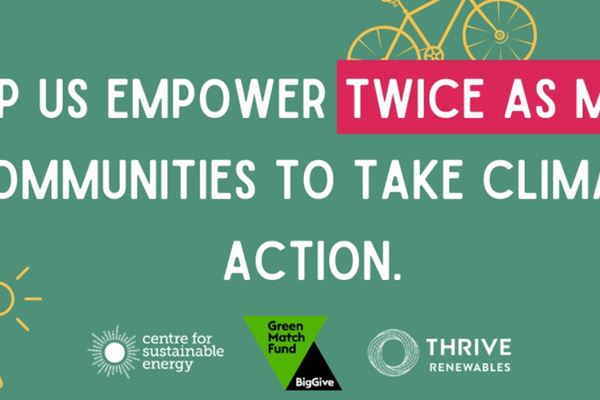In 2019, the UK set legally binding targets to reach net zero emissions by 2050. Fast forward four years and the government’s own external advisors, The Climate Change Committee (CCC), has confirmed that the UK has “lost its clear global leadership position” on net zero, calling government progress on climate action "worryingly slow".
According to the report, UK greenhouse gas emissions have fallen 46 per cent from 1990 levels, but we still have a long way to go – especially after former prime minister Boris Johnson’s COP26 commitment to reduce emissions by 68 per cent by 2030. The CCC has stated that, to hit that target, the current rate of annual emissions reductions (outside of the electricity supply sector) would need to quadruple.
What else did the report say?
The CCC includes various recommendations for how the government could get back on track with net zero. In addition to taking the necessary action to regain its green leadership, it included the need to make important changes to planning policy. It says: “Planning policy needs radical reform to support Net Zero. The planning system must have an overarching requirement that all planning decisions must be taken giving full regard to the imperative of Net Zero.”
To us, this should include significant planning reform for proven technologies that are cheap, clean and we know will deliver – like onshore wind. Recent analysis from Carbon Brief found that the UK’s net gas imports would have been 8% lower in Q1 2023 if onshore wind farms had been built at previous rates, instead of grinding to a halt.
What’s going on with onshore wind?
In 2015, the government made significant changes to onshore wind planning policy in England, making it almost impossible to build new wind farms and resulting in just a small handful of projects being commissioned in the years that followed. For example, the Ambition Community Energy turbine in Bristol (which Thrive funded the construction of) is the only onshore wind project built so far in England in 2023. In fact, Ukraine has built more onshore wind turbines in the past year than England has.
With energy prices skyrocketing over the past 18 months, the issues surrounding onshore wind planning policy have been brought to the forefront, with MPs and the industry recognising the role it could have in reducing bills and accelerating the transition. Following various campaigns, the government launched a technical consultation on changes to the National Planning Policy Framework in December 2022, closing in March 2023. While we were hoping for clarification as part of the government’s “green day” announcements, it instead announced that it would be consulting on how to improve community engagement in relation to building new onshore wind sites.
We have now formally responded to the consultation and expressed our concerns that changing policy pertaining to community engagement will have minimal impact without a change to the current planning rules in England. We have therefore urged the government in both consultations to remove footnote 54 of the National Planning Policy Framework so onshore wind is treated the same as other infrastructure projects in planning decisions.
The consultation was based on the premise that developers should have to proactively demonstrate local support – but according to the government’s own figures, only 12% oppose a wind farm in their community. Defining in policy what local support is will be challenging, expensive, subjective and, based on polling, unnecessary. What we need to see is a level playing field in planning policy where onshore wind is treated exactly the same as other local developments like retail, housing or industrial premises.
How are we moving forwards?
We already have the technology we need to decarbonise electricity generation – it’s just about making the most of it. According to National Grid ESO’s recent Future Energy Scenarios assessment, the UK could achieve net zero by 2050, or even 2046, if fresh policy measures are adopted to accelerate the roll out of these technologies.
Although a wakeup call for the government, the CCC’s report also makes it clear that the UK can regain its climate leadership if the right action is taken. This includes continued investment into clean technologies, which is currently reaching record levels. A report from BloombergNEF found that global investment in the energy transition totalled $1.1 trillion in 2022 – a huge increase on the year before – and renewables received a new record of $495 billion in investment, up 17% on 2021.
We’re proud to have funded the construction of England’s only new onshore wind turbine in 2023 so far, and we’re investing in other critical technologies like solar, battery storage and renewable heat. This will not only support the UK’s transition to net zero but ensure people can enjoy the benefits of clean energy – including cheaper bills – in the years to come.



